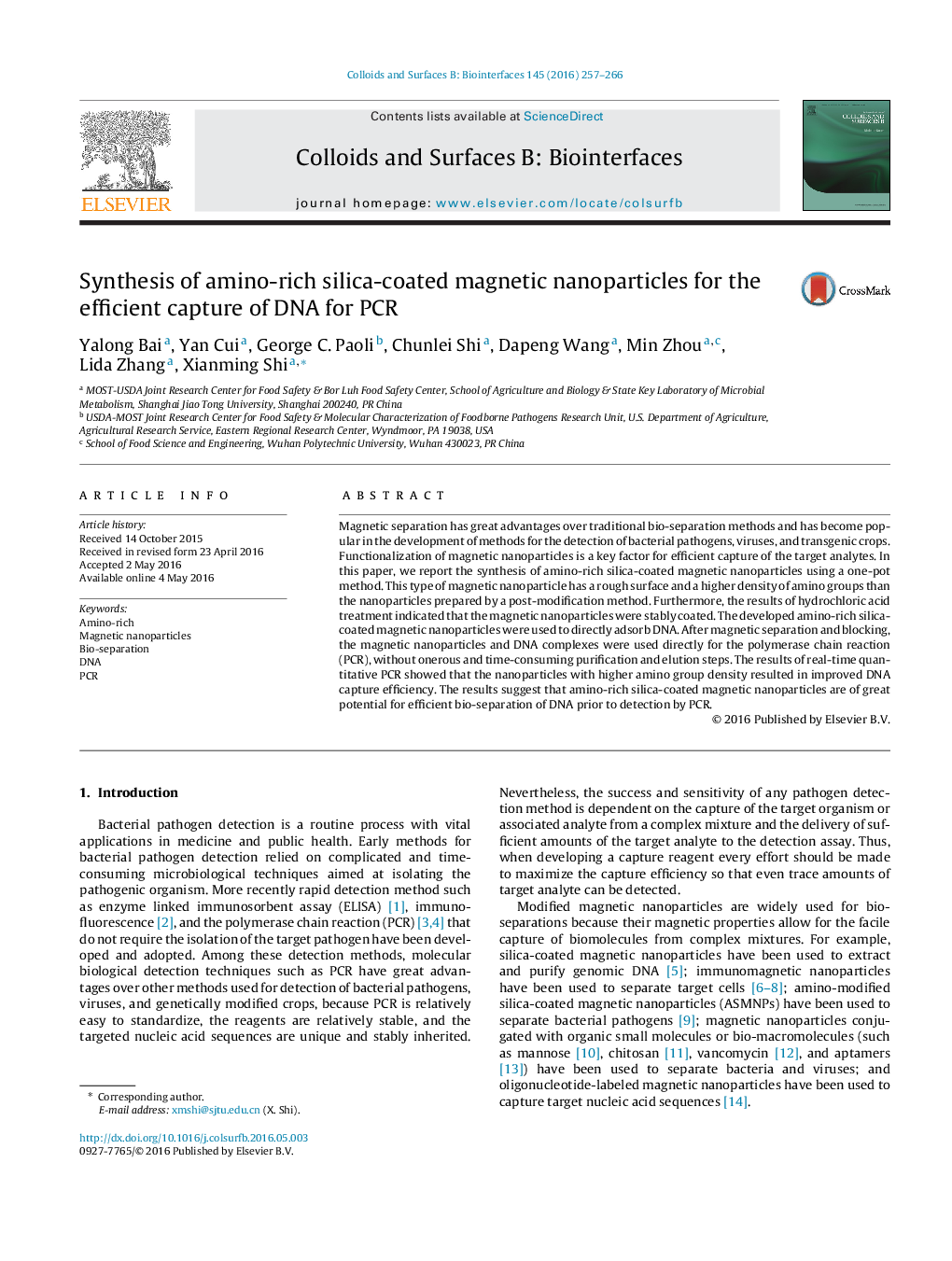| Article ID | Journal | Published Year | Pages | File Type |
|---|---|---|---|---|
| 598947 | Colloids and Surfaces B: Biointerfaces | 2016 | 10 Pages |
•Amino-rich silica-coated magnetic nanoparticles were prepared by a one-pot method.•The higher density of amino groups was related to a rough network surface.•The increased density of amino groups led to an increased capacity for binding DNA.•This type of magnetic nanoparticles was a potential tool to isolate DNA for PCR.
Magnetic separation has great advantages over traditional bio-separation methods and has become popular in the development of methods for the detection of bacterial pathogens, viruses, and transgenic crops. Functionalization of magnetic nanoparticles is a key factor for efficient capture of the target analytes. In this paper, we report the synthesis of amino-rich silica-coated magnetic nanoparticles using a one-pot method. This type of magnetic nanoparticle has a rough surface and a higher density of amino groups than the nanoparticles prepared by a post-modification method. Furthermore, the results of hydrochloric acid treatment indicated that the magnetic nanoparticles were stably coated. The developed amino-rich silica-coated magnetic nanoparticles were used to directly adsorb DNA. After magnetic separation and blocking, the magnetic nanoparticles and DNA complexes were used directly for the polymerase chain reaction (PCR), without onerous and time-consuming purification and elution steps. The results of real-time quantitative PCR showed that the nanoparticles with higher amino group density resulted in improved DNA capture efficiency. The results suggest that amino-rich silica-coated magnetic nanoparticles are of great potential for efficient bio-separation of DNA prior to detection by PCR.
Graphical abstractIn comparison to ASMPNPs (amino-modified silica-coated magnetic nanoparticles), ARSMNPs (amino-rich silica-coated magnetic nanoparticles) with higher density of amino groups are a more powerful tool to isolate DNA for PCR.Figure optionsDownload full-size imageDownload as PowerPoint slide
